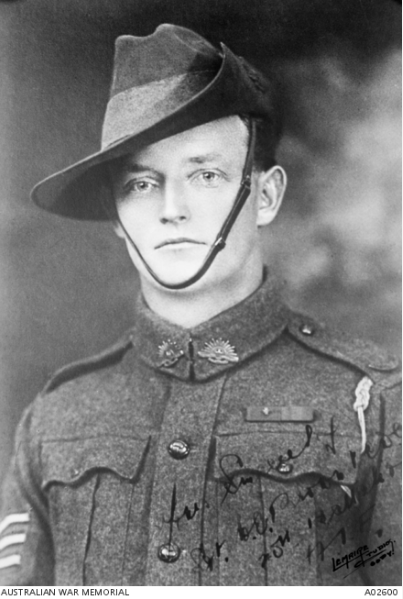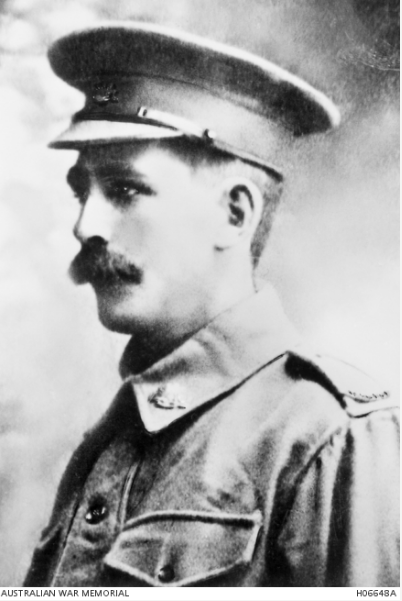Gunner Walter Brown VC, DCM (1885-1942, 56yo)

Walter Ernest Brown came into the world in Tasmania during 1885, and upon completing his education, he found employment in the grocery trade across both Tasmania and New South Wales. Brown joined the Australian Imperial Force on 26 July 1915 as an infantry soldier, though his desire for more immediate combat led him to request a transfer to the light horse units.
Setting sail for Egypt in October 1915, Brown became part of the 1st Light Horse Regiment. His military journey continued with a move to the Imperial Camel Corps, followed by another transfer in July 1916 to reinforcements for the 20th Battalion. During the Battle of Passchendaele in September 1917, Brown’s heroic actions earned him the Distinguished Conduct Medal after he tended to casualties while enduring intense enemy fire, subsequently assuming command of his section when his Sergeant became incapacitated, demonstrating exceptional ‘courage and leadership’.
April 1918 saw Brown’s advancement to Corporal, and during operations in the Villers-Bretonneux area, he participated in an advance unit that secured recently taken trenches close to Accroche Wood. Upon learning of a troublesome sniper position, Brown identified its location, gathered two Mills bombs, and charged toward the enemy post while under fire. Though his initial grenade missed its target, Brown reached the position where he struck down one German soldier and intimidated the remaining enemy troops with his second explosive device. When the Germans capitulated, Brown directed them toward Australian positions, having successfully captured thirteen enemy personnel, including an officer. This remarkable feat resulted in his receipt of the Victoria Cross.
June 1940 witnessed Brown’s re-enlistment in the 2nd A.I.F., achieved by misrepresenting his age as 40 rather than his actual 54 years. Military authorities quickly uncovered both his true age and distinguished service record, leading to his promotion to Lance Sergeant and assignment to the 2/15th Field Regiment, though Brown personally requested demotion back to Gunner. The regiment, forming part of the doomed 8th Division, arrived in Malaya during August 1941. Brown’s final sighting occurred on 14 February 1942, one day before Allied forces surrendered at Singapore. Gathering some grenades, he declared to his fellow soldiers, ‘No surrender for me’, before advancing toward enemy positions. Military records indicate he was presumed to have perished while attempting escape on 28 February.
Corporal Alexander Buckley (1891-1918, 26yo)

Alexander Henry Buckley entered the world in New South Wales during 1891, and following his education at home, he pursued agricultural work alongside his father. Buckley enlisted with the Australian Imperial Force on 3 February 1916, becoming part of the 54th Battalion.
His 1916 service included participation in the Somme campaign, while 1917 saw him engaged in combat at Bullecourt, Polygon Wood and Broodseinde. During this period, he received promotion to temporary Corporal, and in 1917 he participated in the Battle of Amiens.
The operation of 1 September 1918 involved Buckley’s battalion in efforts to secure territory situated between Mont St Quentin and Péronne. The 54th Battalion’s objective required capturing the terrain between Péronne and the River Somme, followed by an advance on Péronne itself. Moving forward through light rain while facing intense enemy fire, the unit successfully seized the initial enemy trench line but encountered resistance from an entrenched machine-gun position. Working alongside Corporal Arthur Hall, VC, Buckley approached these gun crews stealthily and launched an assault on their position, eliminating four enemy soldiers and capturing twenty-two prisoners. German forces withdrew toward Péronne, accessing the city via a substantial bridge which they subsequently demolished. The sole remaining crossing available to the battalion was a narrow footbridge protected by machine-gun emplacements. Buckley attempted to breach this position alongside three company comrades under intense fire but lost his life in the endeavour. His posthumous Victoria Cross citation highlighted his 'initiative, resource and courage'.
Buckley’s final resting place is in the Péronne communal cemetery extension.
Last Reviewed 06/2025









